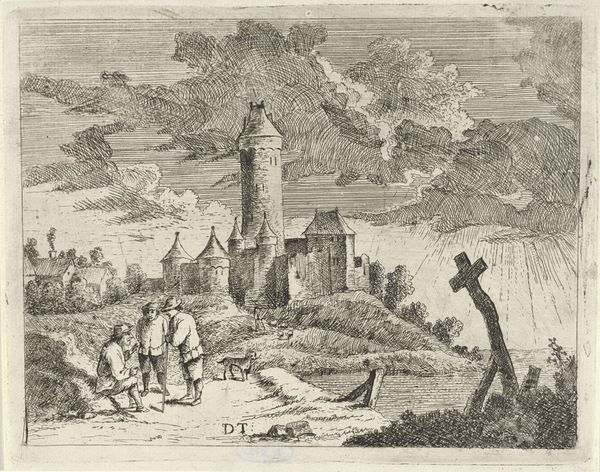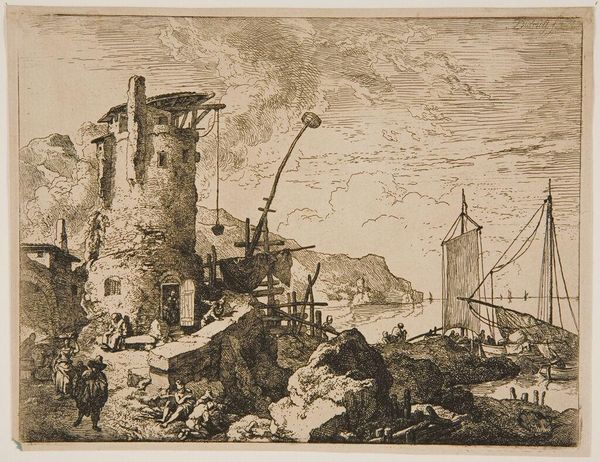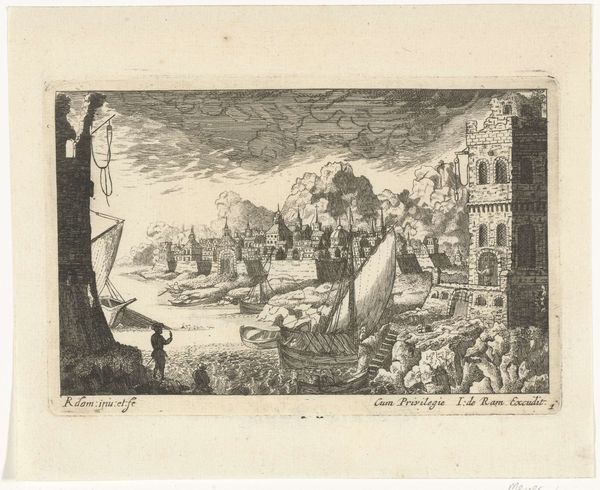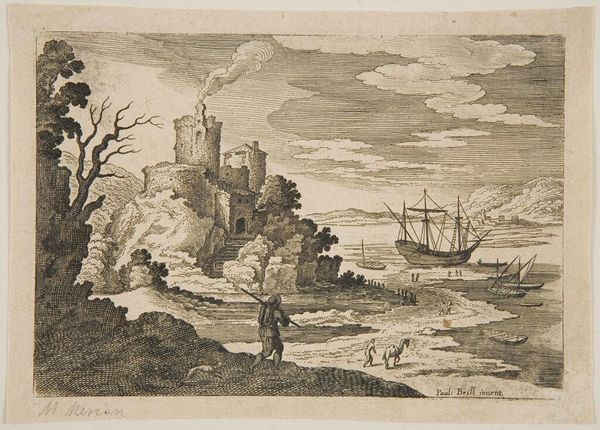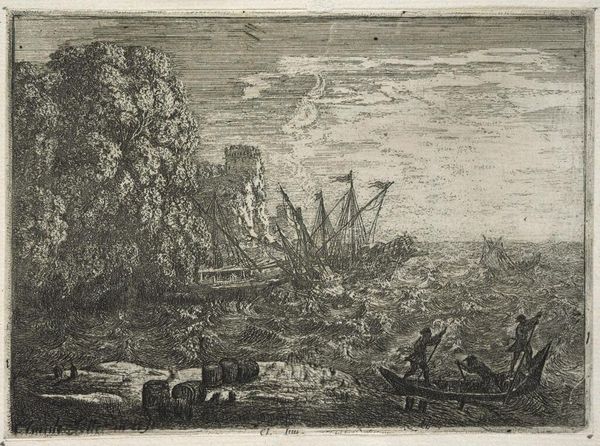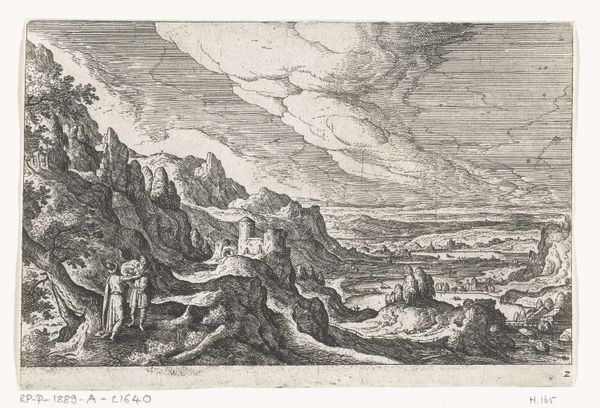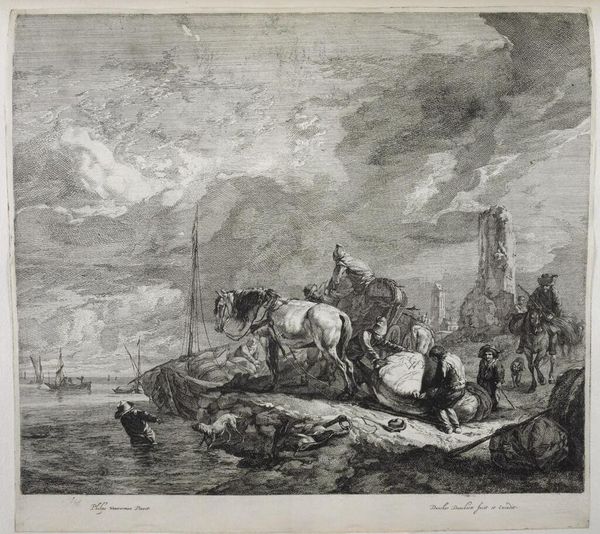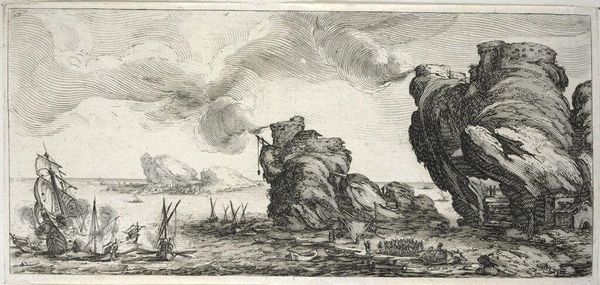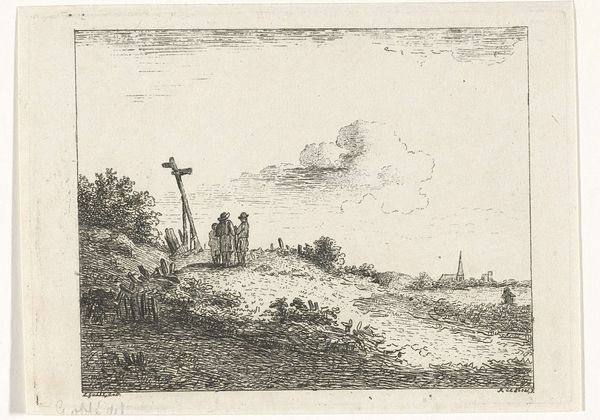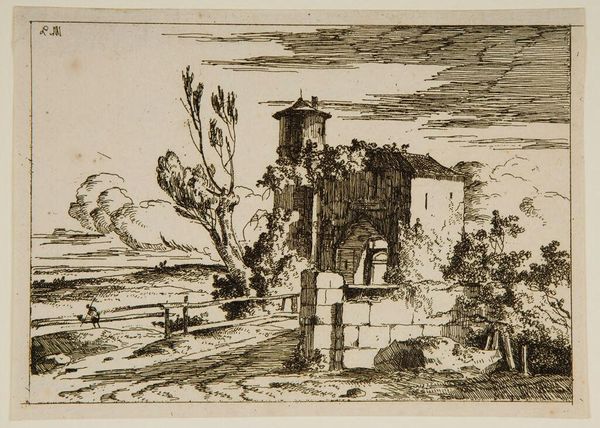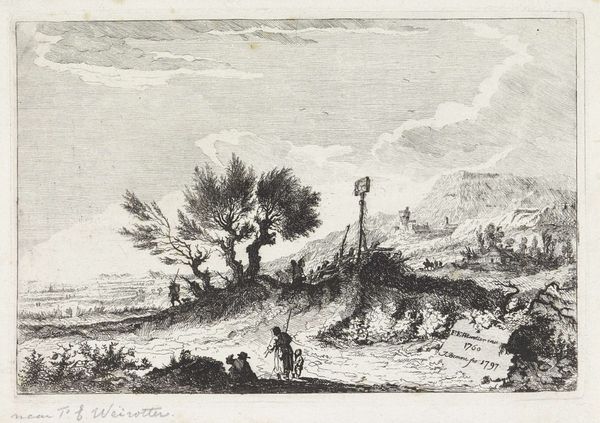
print, etching
#
ink drawing
#
narrative-art
#
baroque
# print
#
etching
#
landscape
#
genre-painting
#
sea
Dimensions: height 148 mm, width 290 mm
Copyright: Rijks Museum: Open Domain
Curator: This etching, attributed to Joost van Geel and titled "Storm op zee," immediately communicates a sense of precariousness. The diagonal tilt of the ship, the churning waves rendered through incredibly fine lines... it feels quite ominous. Editor: Indeed. The stark black and white lends itself well to the drama, but the composition feels intentionally theatrical. One almost wonders if Van Geel ever witnessed a scene quite this dramatic, or if he aimed at illustrating the terror that sea travel holds for many. Curator: It is fascinating how prints were utilized in 17th-century Dutch culture. Beyond purely aesthetic considerations, prints were affordable disseminators of information and social commentary. We see a coastal community seemingly unfazed by the shipwreck taking place so near, as well as figures in authority viewing the devastation from a distance atop horseback near what is identified in script below as a toll station of some sort. Editor: Looking closely at those onlookers, the artist renders a keen eye towards spatial dynamics and contrasts. See how the solid, earthy figures on the coast oppose those at sea that rock from the waves and are imperiled with drowning? Curator: You raise a very relevant point. I think "Storm op zee," created after 1666, taps into the anxieties of a nation deeply reliant on maritime trade and conquest. The maritime power of the Netherlands came with an understanding of vulnerability. The toll station and collection of authority figures overlooking this scene certainly has a strong parallel to this vulnerability of its holdings by water. Editor: The formal choices magnify these anxieties so effectively. Look at how the etching technique allows for a textural depth, capturing both the fury of the sea and the solidity of the land, almost as separate realms in conflict. Curator: That textural richness allows for an allegorical reading, I agree. We observe nature itself presented as this destructive force that can suddenly unsettle social and economic structures. It forces one to think about ideas circulating at that time about Dutch trade networks and the costs associated with such success, given the natural risks of the open water. Editor: An insightful reflection! Ultimately, for me, Van Geel’s work, through its visual power, asks questions about the precariousness of human existence set against the sublime, indifferent backdrop of nature. Curator: And it serves as a chilling reminder that for all the Netherlands achieved by controlling the sea, it was forever subject to the sea’s power.
Comments
No comments
Be the first to comment and join the conversation on the ultimate creative platform.

